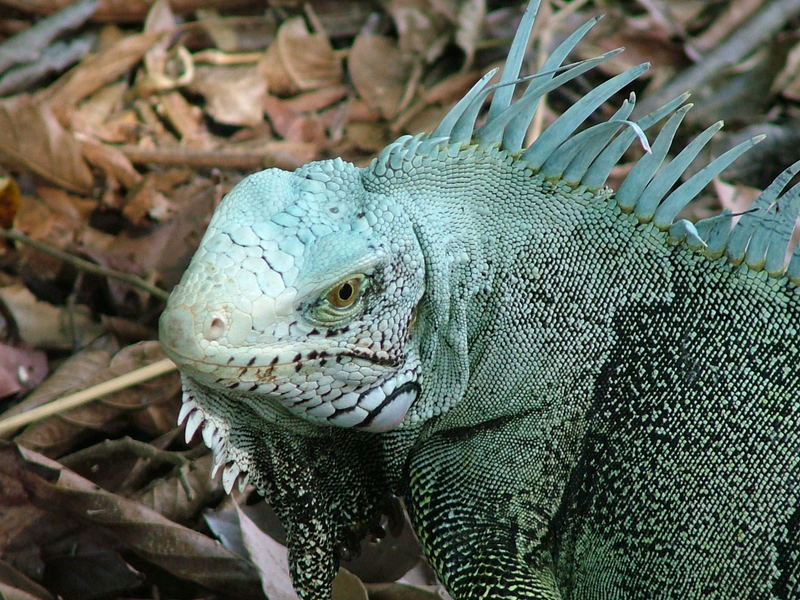FAUNA Y FLORA
FAUNA AND FLORA
The fauna and the flora are two of the most important factors of any ecosystem.
The fauna and the flora are two of the most important factors of any ecosystem.
As we can see in a geographical context, the fog,the clouds and the water vapor; which is our theme, we can find them in misty forests and tropical forests of South America, Asia and the eastern region of Africa; which means that the animals and flora that live in that environment can also be found there.
The Amazon
FAUNA:
Inside the fauna there is a great biodiversity of animals. Depending on whether they are in the misty forest or in the tropical forest, we can find different species, however, due to similar climatic conditions, we can also find them.
Inside the fauna there is a great biodiversity of animals. Depending on whether they are in the misty forest or in the tropical forest, we can find different species, however, due to similar climatic conditions, we can also find them.
- RAINFOREST:
The macaw:

Macaw flying
http://psianimales.weebly.com/la-selva-tropical.html
Capuchin monkeys:

A capuchin monkey typical of Costa Rica
http://psianimales.weebly.com/la-selva-tropical.html

A capuchin monkey typical of Costa Rica
http://psianimales.weebly.com/la-selva-tropical.html
Toucans:

Typical toucan of Costa Rica
The boa constrictor:

Boa constrictor
Other snakes; which can be poisonous or not.

Green poisonous snake

Image of a sleeping jaguar
http://psianimales.weebly.com/la-selva-tropical.html
Other types of felines: Like the puma, the ocelot, the cat of the Pampas, the black panther, among others.




Set of images of felines typical of wet and misty areas.
https://www.vix.com/es/btg/curiosidades/5787/cuantas-especies-de-felinos-existen-en-sudamerica
Tree frogs:


Tree fogs
Other types of felines: Like the puma, the ocelot, the cat of the Pampas, the black panther, among others.




Set of images of felines typical of wet and misty areas.
https://www.vix.com/es/btg/curiosidades/5787/cuantas-especies-de-felinos-existen-en-sudamerica
Tree frogs:


Tree fogs
Anteaters:
The whistling cockroach:

Cockroach typical of South America
The giant millipede:

A giant millipede
http://psianimales.weebly.com/la-selva-tropical.html

Black panther
https://www.vix.com/es/btg/curiosidades/5787/cuantas-especies-de-felinos-existen-en-sudamerica

Tigrillo from The Amazon
https://www.vix.com/es/btg/curiosidades/5787/cuantas-especies-de-felinos-existen-en-sudamerica
FLORA: As part of the extensive fauna that exists, we can also find an infinite variety of species that form the flora, which is classified as:

![100 PLANTAS DEL AMAZONAS [CON SUS NOMBRES]: Liana estrengular en Cuyabeno](https://www.cuyabenolodge.com/amazon-rainforest/amazon-forest-plants/strangler-vine-cuyabeno_small.jpg)
![100 PLANTAS DEL AMAZONAS [CON SUS NOMBRES]: Bromelia roja en Cuyabeno](https://www.cuyabenolodge.com/amazon-rainforest/amazon-forest-plants/bromelia_cuyabeno_ecuador_amazon_small.jpg)
![100 PLANTAS DEL AMAZONAS [CON SUS NOMBRES]: Bromelias en árboles Macrolobia en Laguna Cuyabeno](https://www.cuyabenolodge.com/amazon-rainforest/amazon-forest-plants/bromelia_macrolobia_tree_cuyabeno_small.jpg) Two types of bromeliads
Two types of bromeliads
http://www.cuyabenolodge.com/turismo-amazonas/plantas-del-amazonas-selva.htm
![100 PLANTAS DEL AMAZONAS [CON SUS NOMBRES]: Orquídeas en árboles Macrolobia](https://www.cuyabenolodge.com/amazon-rainforest/amazon-forest-plants/cuyabeno_orchids_and_epiphytes_clad_macrolobium_ecuador_jungle_small.jpg)

![100 PLANTAS DEL AMAZONAS [CON SUS NOMBRES]: Orquídea morada del bosque tropical](https://www.cuyabenolodge.com/amazon-rainforest/amazon-forest-plants/plants_in_the_amazon_forest_small.jpg)
![100 PLANTAS DEL AMAZONAS [CON SUS NOMBRES]: Liana de la selva tropical](https://www.cuyabenolodge.com/amazon-rainforest/amazon-forest-plants/liana-cuyabeno-rainforest_small.jpg)
![100 PLANTAS DEL AMAZONAS [CON SUS NOMBRES]: Liana estrengular en Cuyabeno](https://www.cuyabenolodge.com/amazon-rainforest/amazon-forest-plants/strangler-vine-cuyabeno_small.jpg)
![100 PLANTAS DEL AMAZONAS [CON SUS NOMBRES]: Heliconia roja en la Amazonia](https://www.cuyabenolodge.com/amazon-rainforest/amazon-forest-plants/cuyabeno_lodge_heloconia_small.jpg)
![100 PLANTAS DEL AMAZONAS [CON SUS NOMBRES]: Flor tropical](https://www.cuyabenolodge.com/amazon-rainforest/amazon-forest-plants/paarse-vlinderbloemige-small.jpg)
![100 PLANTAS DEL AMAZONAS [CON SUS NOMBRES]: Árbol con flor amarilla en Cuyabeno](https://www.cuyabenolodge.com/amazon-rainforest/amazon-forest-plants/amazon_bromelium_on_macrolobium_cuyabeno_small.jpg) PERSONAL OPINION: I really enjoyed making this entry, as I have always liked animals. I have learned a lot, especially the different species that exist in the misty and tropical zones and also what each animal needs to live in each ecosystem.
PERSONAL OPINION: I really enjoyed making this entry, as I have always liked animals. I have learned a lot, especially the different species that exist in the misty and tropical zones and also what each animal needs to live in each ecosystem.
WEBGRAPHY:
http://psianimales.weebly.com/la-selva-tropical.html
http://www.turismo-amazonia.com/pesca-bolivia/fauna.html
https://www.vix.com/es/btg/curiosidades/5787/cuantas-especies-de-felinos-existen-en-sudamerica
http://selvastropicales.org/2013/11/19/peces-de-la-selva-tropical/
http://www.cuyabenolodge.com/turismo-amazonas/plantas-del-amazonas-selva.htm
http://paginadeecologia6c.blogspot.com/2016/06/selvas-tropicales.html

A giant millipede
http://psianimales.weebly.com/la-selva-tropical.html
- MISTY FOREST:
Jaguar:
Black panther:

Black panther
https://www.vix.com/es/btg/curiosidades/5787/cuantas-especies-de-felinos-existen-en-sudamerica
Tigrillo:

Tigrillo from The Amazon
https://www.vix.com/es/btg/curiosidades/5787/cuantas-especies-de-felinos-existen-en-sudamerica
Bear gold:
Ant bear:
Monkey whistler:
Ducks :
Parrots:
The dolphins:
The anacondas:
The crocodiles:
The aligators:
Iguanas and chameleons:
- Fungi: Due to the great humidity in these ecosystems, mushrooms grow year-round. There are different types of mushrooms.

Fungis
Trees:
There is a wide variety of trees with different types of leaves and
trunks. Each one has adapted to the environment in which he lives.
![100 PLANTAS DEL AMAZONAS [CON SUS NOMBRES]: Liana estrengular en Cuyabeno](https://www.cuyabenolodge.com/amazon-rainforest/amazon-forest-plants/strangler-vine-cuyabeno_small.jpg)
Tropical tree
- Bromeliads: They are large and brightly colored plants that grow on the trees or in the humid soil.
![100 PLANTAS DEL AMAZONAS [CON SUS NOMBRES]: Bromelia roja en Cuyabeno](https://www.cuyabenolodge.com/amazon-rainforest/amazon-forest-plants/bromelia_cuyabeno_ecuador_amazon_small.jpg)
![100 PLANTAS DEL AMAZONAS [CON SUS NOMBRES]: Bromelias en árboles Macrolobia en Laguna Cuyabeno](https://www.cuyabenolodge.com/amazon-rainforest/amazon-forest-plants/bromelia_macrolobia_tree_cuyabeno_small.jpg)
http://www.cuyabenolodge.com/turismo-amazonas/plantas-del-amazonas-selva.htm
- Orchids: It is the most abundant plant species of the Amazon, and in general, of any tropical forest. It has bright colors and can be of many sizes.
![100 PLANTAS DEL AMAZONAS [CON SUS NOMBRES]: Orquídeas en árboles Macrolobia](https://www.cuyabenolodge.com/amazon-rainforest/amazon-forest-plants/cuyabeno_orchids_and_epiphytes_clad_macrolobium_ecuador_jungle_small.jpg)

![100 PLANTAS DEL AMAZONAS [CON SUS NOMBRES]: Orquídea morada del bosque tropical](https://www.cuyabenolodge.com/amazon-rainforest/amazon-forest-plants/plants_in_the_amazon_forest_small.jpg)
Orchids
- Lianas: are found in almost all trees either tangled hanging. They are dangerous for the tree because they once envelop.
![100 PLANTAS DEL AMAZONAS [CON SUS NOMBRES]: Liana de la selva tropical](https://www.cuyabenolodge.com/amazon-rainforest/amazon-forest-plants/liana-cuyabeno-rainforest_small.jpg)
![100 PLANTAS DEL AMAZONAS [CON SUS NOMBRES]: Liana estrengular en Cuyabeno](https://www.cuyabenolodge.com/amazon-rainforest/amazon-forest-plants/strangler-vine-cuyabeno_small.jpg)
Lianas
- Heliconias: They are precious plants of the Amazon, of which they emphasize their colors and showy forms. They live in the undergrowth and next to the water.
![100 PLANTAS DEL AMAZONAS [CON SUS NOMBRES]: Heliconia roja en la Amazonia](https://www.cuyabenolodge.com/amazon-rainforest/amazon-forest-plants/cuyabeno_lodge_heloconia_small.jpg)
![100 PLANTAS DEL AMAZONAS [CON SUS NOMBRES]: Flor tropical](https://www.cuyabenolodge.com/amazon-rainforest/amazon-forest-plants/paarse-vlinderbloemige-small.jpg)
![100 PLANTAS DEL AMAZONAS [CON SUS NOMBRES]: Árbol con flor amarilla en Cuyabeno](https://www.cuyabenolodge.com/amazon-rainforest/amazon-forest-plants/amazon_bromelium_on_macrolobium_cuyabeno_small.jpg)
Heliconias
http://www.cuyabenolodge.com/turismo-amazonas/plantas-del-amazonas-selva.htm
CONCLUSIÓN: I have come to the conclusion that there is a great variety of species, both animals and plants. They can live in different regions and all have adapted according to the climate where they live.
http://psianimales.weebly.com/la-selva-tropical.html
http://www.turismo-amazonia.com/pesca-bolivia/fauna.html
https://www.vix.com/es/btg/curiosidades/5787/cuantas-especies-de-felinos-existen-en-sudamerica
http://selvastropicales.org/2013/11/19/peces-de-la-selva-tropical/
http://www.cuyabenolodge.com/turismo-amazonas/plantas-del-amazonas-selva.htm
http://paginadeecologia6c.blogspot.com/2016/06/selvas-tropicales.html














Comentarios
Publicar un comentario